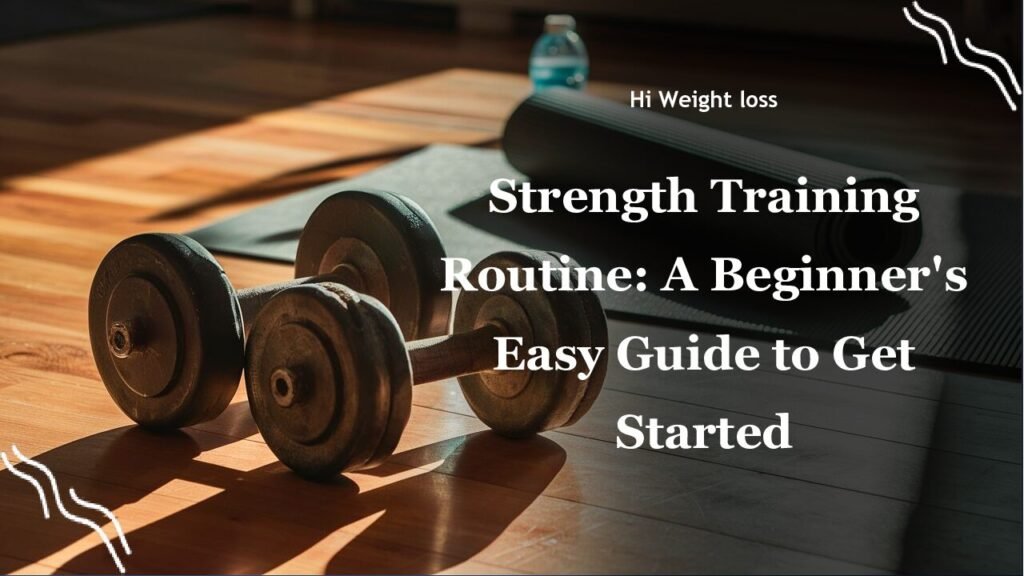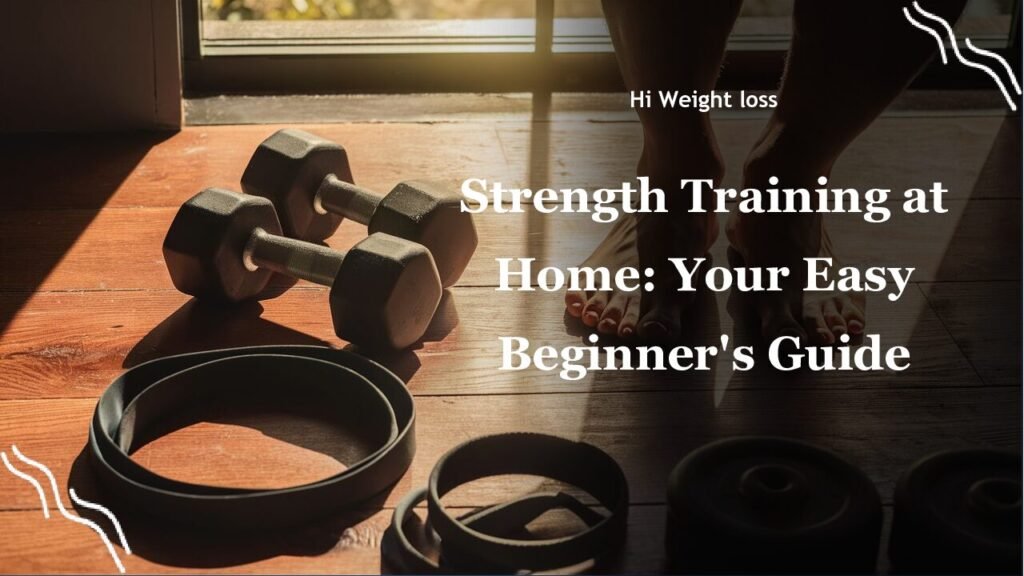“`
Feeling torn between the allure of Pilates and the proven power of strength training? You’re not alone! Many of us wonder if we can swap the weights for a Pilates mat and still achieve our fitness goals. The truth is, while Pilates offers fantastic benefits, it’s not a direct replacement for strength training, especially if you’re aiming for significant muscle growth. This article will break down the key differences and help you understand how each form of exercise can fit into your fitness journey.
Can I Replace Strength Training With Pilates?
Understanding the Core Differences
Let’s start with the basics. Strength training, often involving weights or resistance machines, focuses on building muscle mass and strength. It does this by activating fast-twitch muscle fibers through heavy lifting and explosive movements. I remember when I first started weightlifting; I was amazed at how quickly my strength improved, a feeling that Pilates alone never quite replicated.
Pilates, on the other hand, primarily uses body weight or light resistance, focusing on core strength, flexibility, and overall physical fitness. Pilates targets slow-twitch muscle fibers, which are great for endurance but don’t contribute significantly to muscle hypertrophy, or growth. While both are forms of resistance training, their methods differ greatly.
Pilates for Overall Fitness
Pilates excels in improving core stability and posture, which can enhance athletic performance and everyday activities. My friend, Sarah, who’s a runner, started Pilates a few years ago, and she raves about how it’s improved her running form and helped prevent injuries. It also enhances flexibility and body awareness. Pilates is fantastic for injury prevention, posture, and overall body control. Pilates is also great for those who have joint issues or are new to exercise. It is a low-impact form of exercise, which makes it less likely to cause injury than some of the higher-intensity activities.
Pilates is also great for those who have joint issues or are new to exercise. It is a low-impact form of exercise, which makes it less likely to cause injury than some of the higher-intensity activities. However, Pilates may not be enough if your goal is to build a lot of muscle. You have to choose a fitness regimen that aligns with your specific needs and goals.
Strength Training for Muscle Growth
When it comes to building muscle, strength training is the clear winner. Strength training uses weight, barbells, and other forms of resistance, to increase muscle size and strength, which is very important for overall health. It forces muscles to adapt, which increases their mass and density. Through heavy lifting, you’re activating the fast-twitch muscle fibers, which are key for muscle growth. I’ve seen this firsthand; with consistent strength training, my physique has changed dramatically, and it is completely different compared to when I was doing Pilates only.
If you’re looking for that sculpted look or enhanced physical strength, strength training is absolutely essential. It also leads to metabolic benefits, meaning you burn more calories even when you’re not exercising. Another friend, Mark, who was struggling with his weight, started a strength training program and was surprised how easy it was to lose weight and that muscle mass helped him maintain that weight loss. Weight training can help to prevent conditions such as osteoporosis. However, for most people, only weight training will not be enough, they need to add some additional exercises to their fitness regime.

Can I Use Pilates Instead of Strength Training For Overall Fitness?
While Pilates has some great benefits, it is not always the best option for overall fitness if it is used alone. If you’re primarily looking to improve your core strength and flexibility, then Pilates can be a great option. In my own fitness journey, I noticed that the combination of strength training and Pilates worked very well. The strength training helps me to build muscle, while the Pilates helps me to improve my balance and flexibility. In my opinion, the key is to not rely on a single form of exercise, but to incorporate various forms of fitness activities into your routine.
However, if your goals are to build muscle mass and strength, it is not a good idea to replace strength training with Pilates, you have to incorporate weight training into your routine. The two forms of fitness do not target the same muscle fibers in the same way. Pilates is more about slow, controlled movements, and it works slow-twitch muscle fibers, which help with endurance. On the other hand, strength training can help you to build muscle mass and strength by working on fast-twitch muscle fibers, which are necessary to generate explosive movements, such as sprinting or weightlifting.
Combining Pilates and Strength Training
The best approach often involves combining both Pilates and strength training. This way you gain the benefits of each. Combining these two exercise modalities provides a more complete workout routine by working various parts of your body. You can start with strength training to build muscle mass, and then incorporate Pilates to improve flexibility and core strength.
Many athletes use this approach. For instance, a weightlifter may do Pilates to improve core stability and flexibility, which helps in preventing injuries and enhances performance, or a Pilates enthusiast may use strength training to develop muscle mass, this way he or she can be more powerful. The key is to listen to your body, experiment to find what works best for you. This will allow you to get the best out of both modalities.
Key Differences in a Table
To make the distinction clearer, here’s a table summarizing the main differences between Pilates and strength training:
| Feature | Pilates | Strength Training |
|---|---|---|
| Primary Focus | Core strength, flexibility, posture, body awareness | Muscle hypertrophy, strength, power |
| Muscle Fibers Targeted | Slow-twitch | Fast-twitch |
| Resistance Type | Body weight, springs | Weights, barbells, machines |
| Best for | Injury prevention, posture, flexibility | Muscle growth, strength gains, increased metabolism |
| Impact | Low impact | High impact |
As you can see, while there is some overlap, both activities have different strengths and therefore should be incorporated into your weekly workout schedule.
Conclusion
So, can you replace strength training with Pilates? Not if your primary goal is to build significant muscle mass or strength. Pilates is an excellent form of exercise that improves core strength, flexibility, and overall body awareness, while strength training is the best option for increasing muscle mass and physical strength. Think of it like this: Pilates is the foundation, while strength training is the skyscraper on top of that foundation. Ideally, you should do both for overall health and strength.
My personal experience, and the experiences of my friends, have shown me that the best way to approach fitness is by combining both forms of exercise. Don’t limit yourself to just one exercise routine. Embrace the differences and benefits that each has to offer. If you’ve been considering swapping strength training for Pilates, hopefully, this article has given you clarity, now it’s your turn to take action. Share this article with friends who might be struggling with this decision, and start a routine that makes sense for your specific goals and needs!
FAQ
Is Pilates enough for building strength without weight training?
While Pilates can improve muscle strength and endurance, it does not provide the same level of muscle hypertrophy as strength training. Strength training, which uses weights, barbells, and machines, activates fast-twitch muscle fibers, which are necessary to increase muscle mass and strength. If you are aiming to build a lot of muscle mass, you need to lift heavy weights. According to a study published on Creightonpt, Pilates mainly focuses on slow-twitch muscle fibers, which are great for endurance, but are not that great for building muscle mass.
Can I use Pilates instead of strength training for overall fitness?
Pilates provides various health benefits, such as increased muscle strength, improved flexibility, and better posture. However, if you’re aiming to build muscle mass or strength, it should not be a direct substitute for weight lifting. For overall fitness, the best approach is to combine both Pilates and strength training. As Pilatesbridge, states, combining both can lead to a well-rounded workout routine that addresses various aspects of physical health, leading to an improvement in strength and flexibility.
Can I do Pilates every day?
Yes, Pilates is considered a low-impact exercise, and you can do it every day, but not all workout routines need to be done daily. You have to give yourself enough rest to allow your muscles to recover. Pilates is great for daily workouts, but you should incorporate other forms of exercise for a well-rounded fitness approach. According to Lindywell, the combination of Pilates and strength training is a great way to improve your physical fitness and health, and to avoid injuries.
“`



